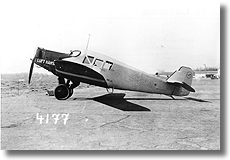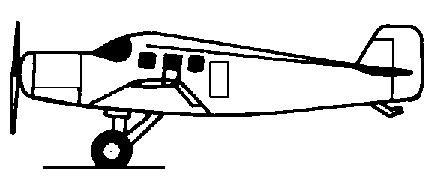
| Year in Service: 1919 | Maneuver: -1 | Armor: 4/8/12 |
| Threat Value: - | Fire control: -2 | Movement: Fly 23/28 |
| Size: 4 | Sensors: None | Deployment Range: 800 km |
| Crew: 2 | Communications: None |
Perks&Flaws
Cargo: max 650 Kg.Payload.
Passenger Seating (4)
Fragile Chassis.
Other Data
 Description:
Description:
- Average Cost: ...$
- Frequency: Uncommon
- Length: 10.50m
- Height: 3.50m
- Wingspan: 17,8 m.
- Net Weight: 1160 kg
- Max. speed: 170 km/h
- Take off distance: 200 m
- Service ceiling: 4000 m
The F13 was not allowed to be operated in Germany after WW I due to the Allied restrictions, but it still succeeded in becoming a very successful product. It was built for more than ten years until 1929; it made up the bulk of the Lufthansa fleet from 1926 to 1935, with 40 aircraft, and was built in various subtypes, with different engines, open or closed cockpit, sea- or landplane.
The first F13 was sold to John Larsen and it was shipped to the USA in December 1919. Junkers-Larsen Corporation, a company created to handle sales of the plane in the USA, was founded in In 1920. The USA version was named JL6.
Most of these aircraft were used by the U.S. Postal Department and some were sold to Canadian Oil Companies. The sale of further JL6 aircraft in the U.S. failed due to a crash series of JL6 aircraft, which was caused by some modifications on the aircraft for the American market.
A single JL6 was modified by Larsen later on into a military combat aircraft. This version (codenamed JL12) had a Liberty engine and was armed with 12 machine guns, intended for air-to-ground attacks.
Larsen offered this aircraft to the U.S. Army, but they showed little interest in it.
Nevertheless, the Junkers-Larsen Corporation helped Hugo Junkers and the F13 to survive the initial years of its existence, when Junkers was unable to use and sell his new aircraft in Germany.